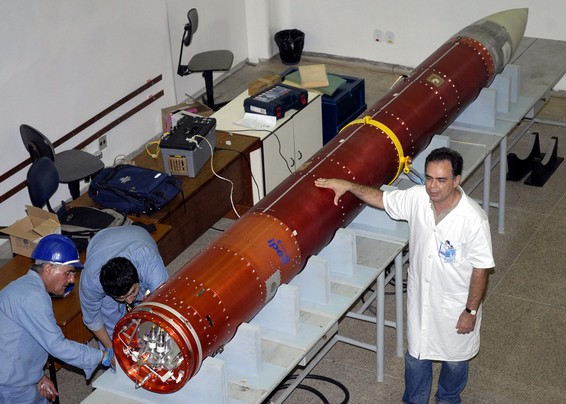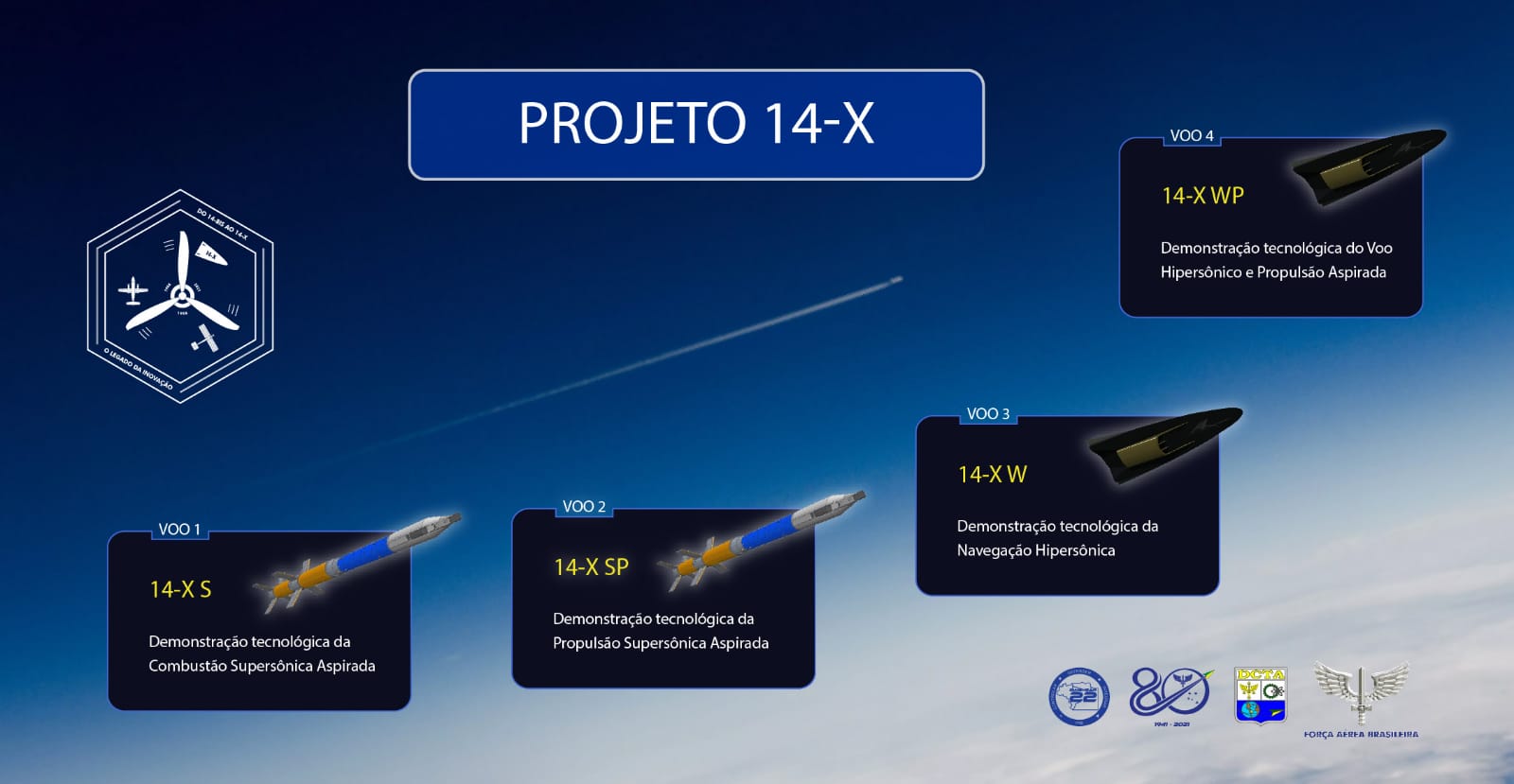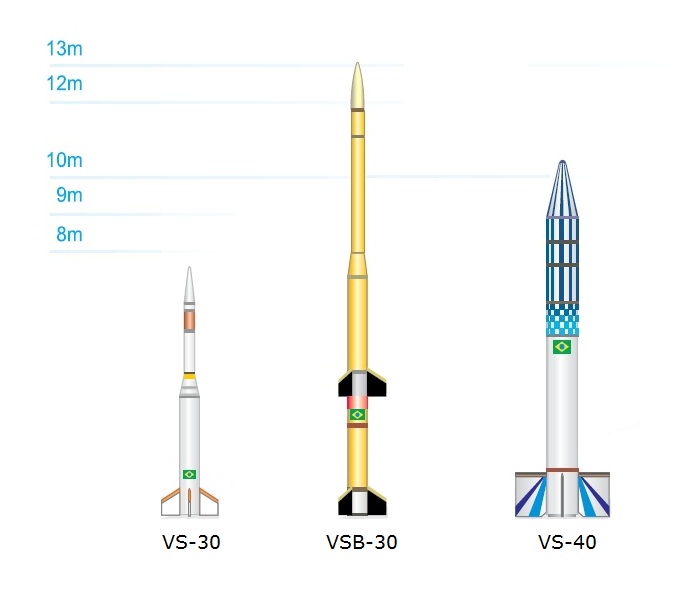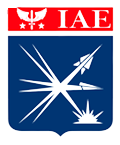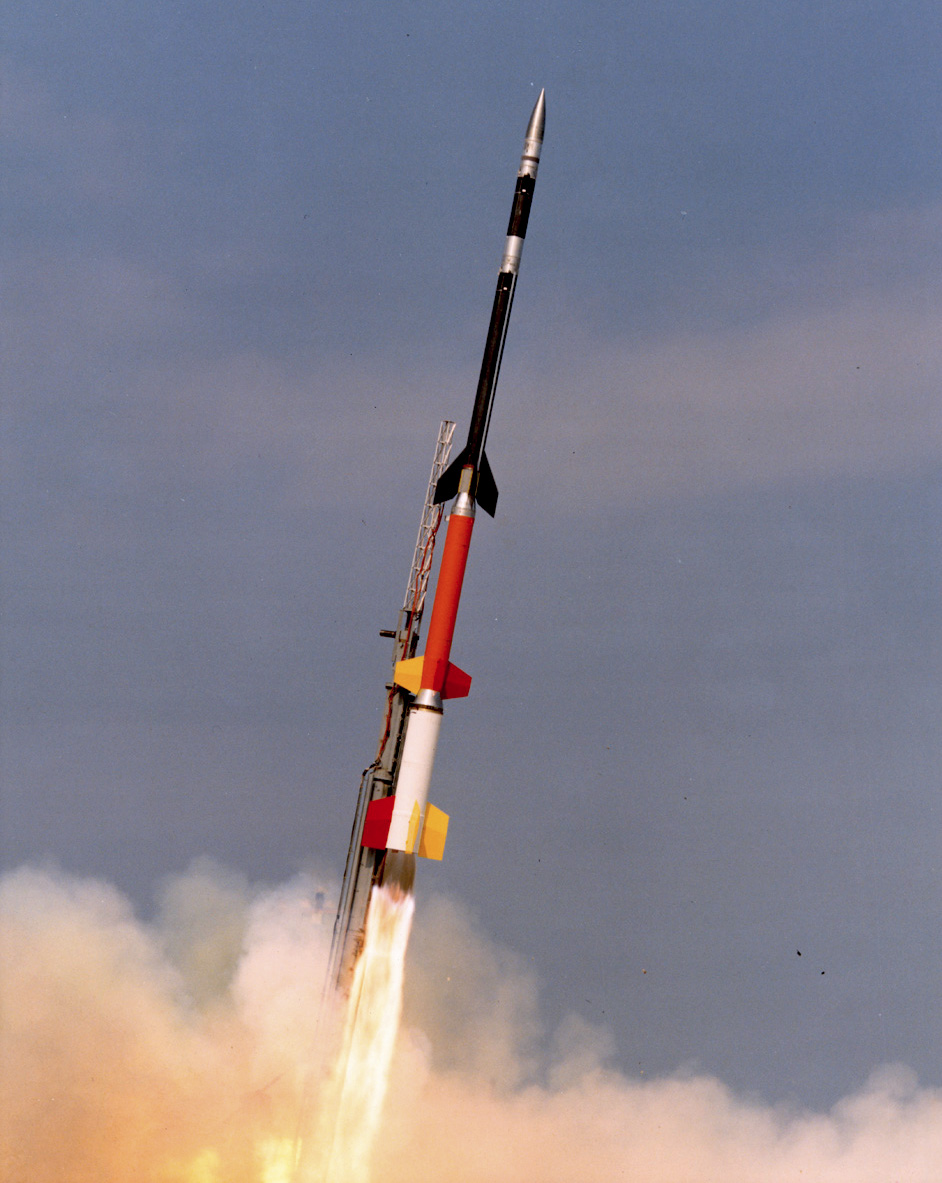|
VSB-30
VSB-30 - "''Veículo de Sondagem Booster – 30''" (Booster Sounding Vehicle) or "''Foguete Suborbital VSB-30''" is the designation of a Brazilian sounding rocket, which replaced the Skylark rocket at ''Esrange''. The VSB-30 is based on the VS-30 rocket (S-30 engine) with the addition of a booster stage (S-31 engine). Development started in 2000 in cooperation with DLR. The rocket can carry a payload of 400 kg to an altitude of 270 km. It has a liftoff thrust of 240 kN and a total mass of 2570 kg. It has a diameter of 0.57 m and a length of 12.6 m. VSB-30 was first launched on October 23, 2004, at Alcântara Launch Center. The first launch at ''Esrange'' took place on December 1, 2005. Flights * VSB-30 XV-01 - "Cajuana test" - 2004 October 23 - Apogee: 240 km * VSB-30 V02 -" TEXUS EML-1/TEXUS 42 Microgravity mission" - 2005 December 1 - Apogee: 263 km * VSB-30 V03 -"TEXUS 43 Microgravity mission" - 2006 May 10 - Apogee: 237 km * VSB-30 V04 - ... [...More Info...] [...Related Items...] OR: [Wikipedia] [Google] [Baidu] |
VSB-30
VSB-30 - "''Veículo de Sondagem Booster – 30''" (Booster Sounding Vehicle) or "''Foguete Suborbital VSB-30''" is the designation of a Brazilian sounding rocket, which replaced the Skylark rocket at ''Esrange''. The VSB-30 is based on the VS-30 rocket (S-30 engine) with the addition of a booster stage (S-31 engine). Development started in 2000 in cooperation with DLR. The rocket can carry a payload of 400 kg to an altitude of 270 km. It has a liftoff thrust of 240 kN and a total mass of 2570 kg. It has a diameter of 0.57 m and a length of 12.6 m. VSB-30 was first launched on October 23, 2004, at Alcântara Launch Center. The first launch at ''Esrange'' took place on December 1, 2005. Flights * VSB-30 XV-01 - "Cajuana test" - 2004 October 23 - Apogee: 240 km * VSB-30 V02 -" TEXUS EML-1/TEXUS 42 Microgravity mission" - 2005 December 1 - Apogee: 263 km * VSB-30 V03 -"TEXUS 43 Microgravity mission" - 2006 May 10 - Apogee: 237 km * VSB-30 V04 - ... [...More Info...] [...Related Items...] OR: [Wikipedia] [Google] [Baidu] |
Maser (rocket)
MASER is a sounding rocket that is used in the MASER microgravity research rocket programme, which is operated by the Swedish Space Corporation (SSC). The main customer is the European Space Agency (ESA), and in particular its EMIR and ELIPS programmes. MASER stands for "MAterials Science Experiment Rocket". The launches take place at Esrange in Northern Sweden. The programme offers 6-7 minutes of microgravity and full recovery of the experiment modules with helicopter immediately after flight. Missions See also * Maxus * Texus * Rexus and Bexus * Esrange Esrange Space Center (short form Esrange) is a rocket range and research centre located about 40 kilometers east of the town of Kiruna in northern Sweden. It is a base for scientific research with high-altitude balloons, investigation of the au ... References * * {{rocket-stub Sounding rockets of Sweden Space programme of Sweden ... [...More Info...] [...Related Items...] OR: [Wikipedia] [Google] [Baidu] |
14-X
The 14-X is a Brazilian scramjet engine in development by the Aerothermodynamics and Hypersonics Laboratory Henry T. Nagamatsu of the Institute of Advanced Studies (IEAv) of the Department of Aerospace Science and Technology as part of the ''PropHiper'' (Portuguese: ''Projeto de Propulsão Hipersônica 14-X''). The name is a reference to the 14-bis, of the Brazilian inventor and aviation pioneer Alberto Santos-Dumont. The Brazilian Air Force conducted the first qualification test flight of the 14-X engine on 14 December 2021 from the Alcântara Space Center. Development Brazil conducts studies in the field of aspirated hypersonics since 1990s, but an development plan was conceived only in 2007, through the ''PropHiper'' project, made official by the Air Force in 2008, when the engineer-captain of the Brazilian Air Force, Tiago Cavalcanti Rolim, started a master's degree at the Instituto Tecnológico de Aeronáutica (ITA) and was approved with a thesis on the waverider config ... [...More Info...] [...Related Items...] OR: [Wikipedia] [Google] [Baidu] |
VS-30
The VS-30 is a Brazilian sounding rocket, derived from the Sonda 3 sounding rocket's first stage.Encyclopedia Astronautica - VS-30 It consists of a single, solid-fuelled stage, and has been launched from Alcântara, , and , , in ... [...More Info...] [...Related Items...] OR: [Wikipedia] [Google] [Baidu] |
Esrange
Esrange Space Center (short form Esrange) is a rocket range and research centre located about 40 kilometers east of the town of Kiruna in northern Sweden. It is a base for scientific research with high-altitude balloons, investigation of the aurora borealis, sounding rocket launches, and satellite tracking, among other things. Located 200 km north of the Arctic Circle and surrounded by a vast wilderness, its geographic location is ideal for many of these purposes. Esrange was built in 1964 by ESRO, the ''European Space Research Organisation'', which later became European Space Agency by merging with ELDO, the European Launcher Development Organisation. The first rocket launch from Esrange occurred on 19 November 1966. In 1972, ownership was transferred to the newly started Swedish Space Corporation. History In the 1960s Esrange was established as an ESRO sounding rocket launching range located in Kiruna (Sweden). This location was chosen because it was generally agreed tha ... [...More Info...] [...Related Items...] OR: [Wikipedia] [Google] [Baidu] |
Institute Of Aeronautics And Space
The ''Institute of Aeronautics and Space'' (Portuguese: ''Instituto de Aeronáutica e Espaço'') is a military research organization of the Brazilian Air Force's Department of Aerospace Science and Technology (DCTA), founded on 1 January 1954. The IAE was refounded in 1991 as result of the merger of the Brazil's ''Institute of Space Activities'' and the ''Institute of Development and Research'' subordinated to the DCTA. The current IAE have a strong presence in the space and aeronautics activities in Brazil. Together with the National Institute for Space Research (INPE), the Alcântara Space Center (CEA) and the Barreira do Inferno Launch Center (CLBI), these public organizations represent today the pillars for the national space program through the Brazilian Space Agency (AEB). The IAE is responsible for the development of rockets and launchers such as the VLM-1 for AEB, the VSB-30 and 14-X for the Brazilian Air Force, satellites and the corresponding ground stations for the ... [...More Info...] [...Related Items...] OR: [Wikipedia] [Google] [Baidu] |
Sounding Rocket
A sounding rocket or rocketsonde, sometimes called a research rocket or a suborbital rocket, is an instrument-carrying rocket designed to take measurements and perform scientific experiments during its sub-orbital flight. The rockets are used to launch instruments from 48 to 145 km (30 to 90 miles) above the surface of the Earth, the altitude generally between weather balloons and satellites; the maximum altitude for balloons is about 40 km (25 miles) and the minimum for satellites is approximately 121 km (75 miles). Certain sounding rockets have an apogee between 1,000 and 1,500 km (620 and 930 miles), such as the Black Brant X and XII, which is the maximum apogee of their class. Sounding rockets often use military surplus rocket motors. NASA routinely flies the Terrier Mk 70 boosted Improved Orion, lifting 270–450-kg (600–1,000-pound) payloads into the exoatmospheric region between 97 and 201 km (60 and 125 miles). Etymology The origin of the term ... [...More Info...] [...Related Items...] OR: [Wikipedia] [Google] [Baidu] |
Solid Rocket
A solid-propellant rocket or solid rocket is a rocket with a rocket engine that uses solid propellants Rocket propellant is the reaction mass of a rocket. This reaction mass is ejected at the highest achievable velocity from a rocket engine to produce thrust. The energy required can either come from the propellants themselves, as with a chemical ... (fuel/oxidizer). The earliest rockets were solid-fuel rockets powered by gunpowder; they were used in warfare by the Mamluk Sultanate, Arabs, Dynasties in Chinese history, Chinese, Ilkhanate, Persians, Mongol Empire, Mongols, and Delhi Sultanate, Indians as early as the 13th century. All rockets used some form of solid or powdered propellant up until the 20th century, when liquid-propellant rockets offered more efficient and controllable alternatives. Solid rockets are still used today in military armaments worldwide, model rockets, solid rocket boosters and on larger applications for their simplicity and reliability. Since sol ... [...More Info...] [...Related Items...] OR: [Wikipedia] [Google] [Baidu] |
Sounding Rocket
A sounding rocket or rocketsonde, sometimes called a research rocket or a suborbital rocket, is an instrument-carrying rocket designed to take measurements and perform scientific experiments during its sub-orbital flight. The rockets are used to launch instruments from 48 to 145 km (30 to 90 miles) above the surface of the Earth, the altitude generally between weather balloons and satellites; the maximum altitude for balloons is about 40 km (25 miles) and the minimum for satellites is approximately 121 km (75 miles). Certain sounding rockets have an apogee between 1,000 and 1,500 km (620 and 930 miles), such as the Black Brant X and XII, which is the maximum apogee of their class. Sounding rockets often use military surplus rocket motors. NASA routinely flies the Terrier Mk 70 boosted Improved Orion, lifting 270–450-kg (600–1,000-pound) payloads into the exoatmospheric region between 97 and 201 km (60 and 125 miles). Etymology The origin of the term ... [...More Info...] [...Related Items...] OR: [Wikipedia] [Google] [Baidu] |
Mapheus 5
Mapheus 5 was a German Aerospace Center VSB-30 sounding rocket launched to on 30 June 2015 from the Esrange Space Center in Sweden Sweden, formally the Kingdom of Sweden,The United Nations Group of Experts on Geographical Names states that the country's formal name is the Kingdom of SwedenUNGEGN World Geographical Names, Sweden./ref> is a Nordic country located on .... References {{Portal, Spaceflight Space science experiments Sounding rockets of Germany 2015 in spaceflight 2015 in Sweden ... [...More Info...] [...Related Items...] OR: [Wikipedia] [Google] [Baidu] |
List Of Rockets
There are several different types of rockets. The following articles contain lists of rockets by type: * List of missiles * List of orbital launch systems * List of sounding rockets * List of military rockets * List of rocket stages See also * Comparison of orbital launch systems * Comparison of orbital launchers families * Comparison of space station cargo vehicles * Comparison of orbital rocket engines * Comparison of solid-fuelled orbital launch systems * List of space launch system designs * List of artillery#Rockets * List of rocket aircraft * Lists of weapons * Model rocket * NATO reporting name NATO reporting names are code names for military equipment from Russia, China, and historically, the Eastern Bloc (Soviet Union and other nations of the Warsaw Pact). They provide unambiguous and easily understood English words in a uniform manne ... (has lists of various Soviet missiles) {{DEFAULTSORT:Rockets *Rockets lists ... [...More Info...] [...Related Items...] OR: [Wikipedia] [Google] [Baidu] |
VS-40
The VS-40 (''Foguete Suborbital VS-40'') is a Brazilian sounding rocket using solid fuel, stabilized aerodynamically, distributed between the first stage S40TM (4,200 kg) engine and the second stage S44M (810 kg) engine. This configuration corresponds to the upper stages of the VLS-1 rocket. Flights * VS-40 PT-01 - "''Operação Santa Maria''" - 1993/04/02 - Qualifying flight for the S44 engine. 760 seconds in micro-gravity. * VS-40 PT-02 - "''Operação Livramento''" - 1998/03/21 - VAP-1 (Fokker) payload. * VS-40M / SHEFEX II - 2012/06/22 - ''SHEFEX ( Sharp Edge Flight Experiment) II'' payload. * VS-40M / V03 - "''Operação São Lourenço''" - 2015/11/13 - '' SARA - Satélite de Reentrada Atmosférica (Atmospheric Reentry Satellite) Suborbital 1'' - Failure (exploded on pad) * VS-40M - in development - HIFiRE 8 * VS-40M - Canceled - ''SARA Suborbital 2'' Characteristics *Length (mm) 6725 *Payload Mass (kg) 500 *Diameter (mm) 1000 *Total takeoff mass (kg) 6,737 * ... [...More Info...] [...Related Items...] OR: [Wikipedia] [Google] [Baidu] |
